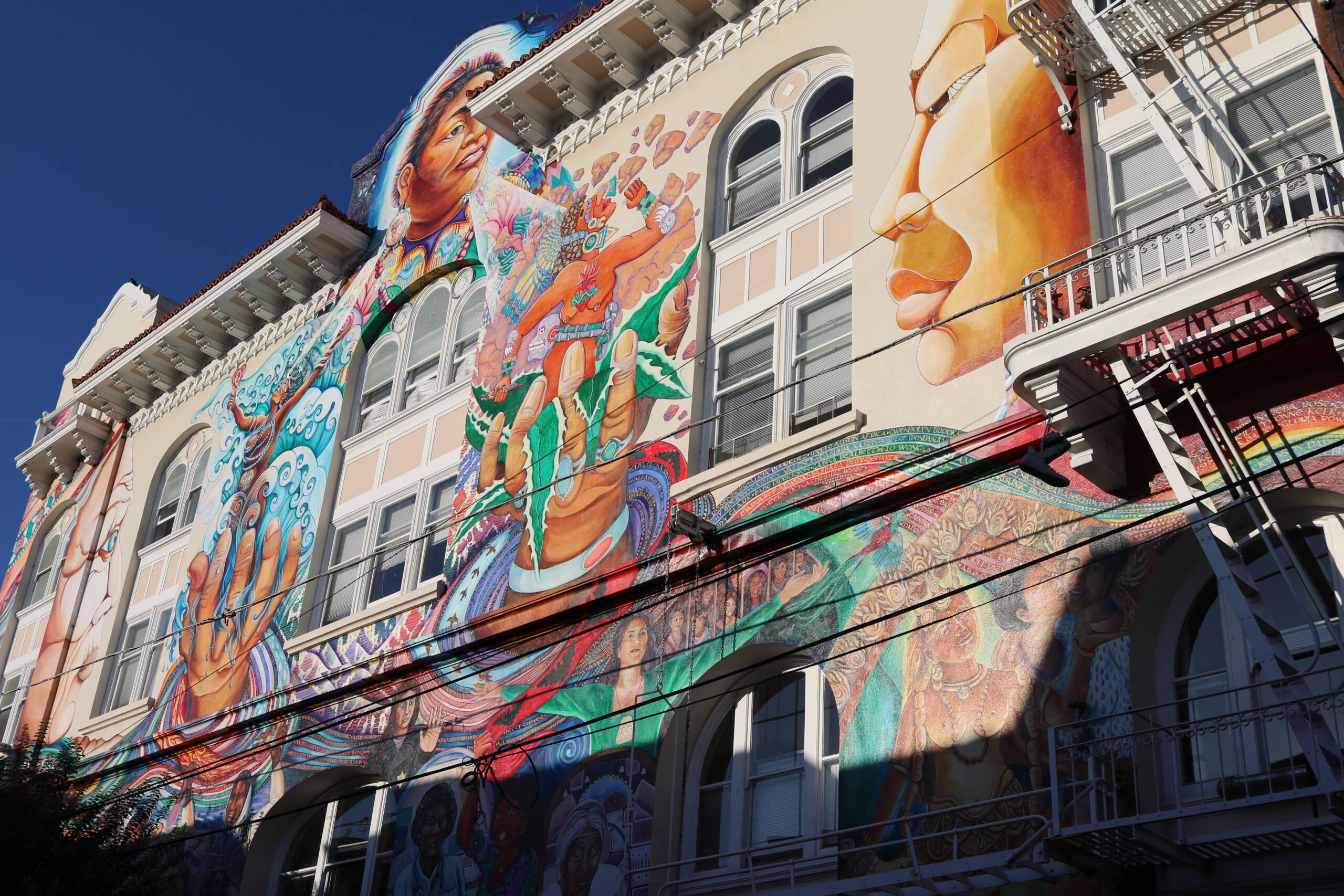Walking through San Francisco’s Mission District, it’s almost impossible not to stop in awe when you come across the giant, story-filled murals that climb up the sides of old buildings. This one in particular feels alive, like the wall itself is breathing history, memory, and hope. Painted across several stories of a classic façade, the artwork blends indigenous traditions, spiritual symbolism, and everyday resilience. Hands rise upward, some holding water that flows like lifeblood, others cradling plants, almost as if the mural wants to remind you of the deep connections between nature, people, and survival.

What makes it even more compelling is how the faces seem to watch over the neighborhood—one serene, eyes closed as if in prayer, another smiling brightly, painted with warm, earthy tones that contrast with the sharp California sky above. Below them, layers of stories unfold: women, men, children, woven together with patterns, waves, feathers, and woven textures. The rainbow threads tie it all into a collective vision of community and continuity, bridging the past with the present.
If you stand on the sidewalk for a while, you’ll notice how the fire escape cuts across the mural, almost rudely, as if the metalwork couldn’t resist leaving its own shadow on the art. Power lines also cross the view, reminding you that this isn’t a gallery piece but something deeply urban—art that belongs to the street, tangled with the grit and the noise of daily life. Yet, maybe that’s part of its power: imperfection mixing with grandeur, reality with dream.
Travelers often zip past Mission Street or Valencia without slowing down, but pausing here pays off. The murals aren’t just decoration; they are open-air museums, tributes to heritage, to migration, to injustice and resilience. They tell you as much about San Francisco as the Golden Gate Bridge does, maybe more, if you’re willing to listen. And the best part? They change as the light moves—morning shadows, afternoon brightness, twilight glow—each time offering a different version of the same story. It’s a place worth returning to, again and again, because the wall never stops talking.
Leave a Reply